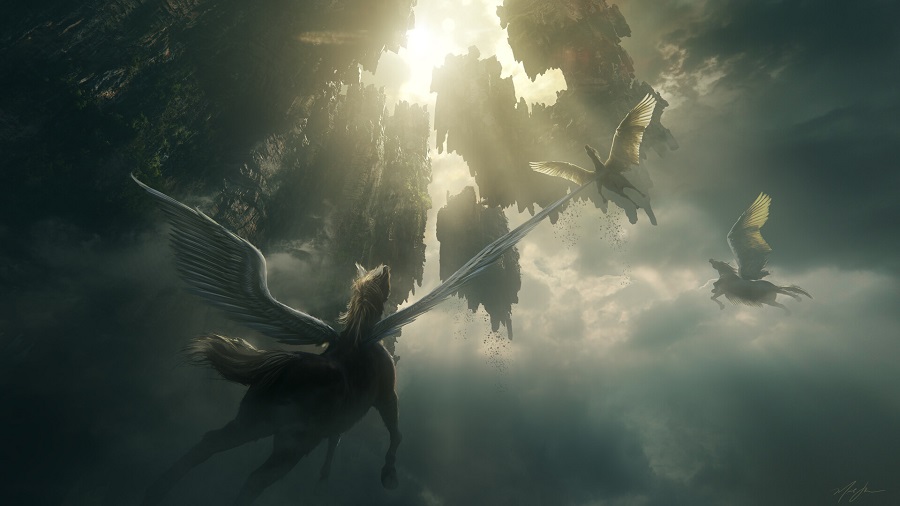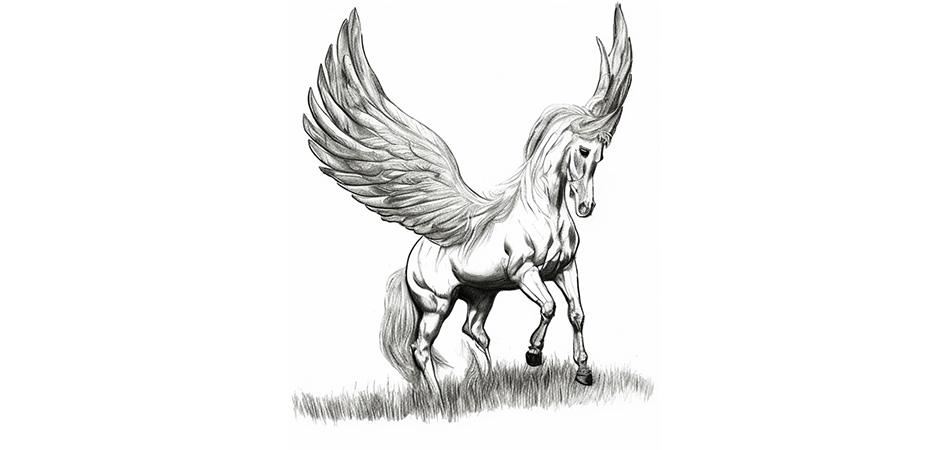Pegasus, the winged horse from Greek mythology, is still a popular mythological creature today, appearing in logos, movies, video games and books.
The exact time period when Pegasus was first mentioned is uncertain, as the myth of Pegasus likely emerged from ancient Greek oral tradition before being recorded in written texts. However, the earliest surviving written accounts of Pegasus are from ancient Greek literature, including Hesiod’s Theogony, which was written around the 8th or 7th century BCE, and Homer’s Iliad, which was composed around the 8th century BCE.
The earliest known reference to Pegasus is found in the epic poem “The Iliad” by Homer, written in the 8th century BCE. In the poem, Pegasus is described as a majestic, winged horse who was born from the blood of the Gorgon Medusa after she was slain by the hero Perseus. According to legend, Pegasus was tamed and ridden by the hero Bellerophon, who used him to slay the monstrous Chimera and other foes. The myth of Pegasus became a popular subject in Greek art and literature, and his image has been depicted on countless artifacts throughout the ages.
In Greek mythology, Pegasus is often described as a beautiful, pure white stallion with wings. He is said to be incredibly fast and agile, able to fly great distances and scale great heights. In most depictions, Pegasus is shown as a pure white horse with large wings. However, there are also depictions of Pegasus with other colors, such as black or gray, but the most common is white. It’s worth noting that the white color of Pegasus symbolizes purity, innocence, and divine grace in many cultures.
According to one version of the myth, Pegasus was born when the hero Perseus cut off the head of the Gorgon Medusa. As the blood of the Gorgon spilled onto the ground, two creatures were born: Chrysaor, a warrior, and Pegasus, the winged horse.

After his birth, Pegasus flew away and eventually landed on Mount Helicon, where he struck the ground with his hoof and created a spring, which became sacred to the Muses. The Muses then tamed Pegasus and used him to help them with their artistic endeavors.
In another version of the myth, Pegasus is said to have been captured by the hero Bellerophon, who rode him into battle against the fearsome Chimera, a monster with the head of a lion, the body of a goat, and the tail of a serpent. With Pegasus’ help, Bellerophon was able to defeat the Chimera and become a great hero. However, Bellerophon eventually became too prideful and attempted to ride Pegasus to Mount Olympus to join the gods. Zeus, angered by Bellerophon’s hubris, sent a gadfly to sting Pegasus, causing Bellerophon to fall to his death. Pegasus, however, continued on to Olympus, where he was welcomed by the gods and given a place among the stars as a constellation.
There are many tales about Pegasus, one of the most popular is about Poseidon, Athena and the hero Perseus.
Once upon a time, the god Poseidon, who was known as the god of the sea, earthquakes, and horses, was competing with the goddess Athena, who was known as the goddess of wisdom and war, for control of the city of Athens. Poseidon struck his trident against a rock, and a spring of saltwater gushed forth, while Athena planted an olive tree, which the people of Athens found to be more useful.
Angered by his defeat, Poseidon unleashed his fury on the city by sending a terrifying sea monster named Cetus to attack it. The only way to defeat the monster was to offer it a sacrifice of the most beautiful maiden in Athens.
In order to save his daughter, King Cepheus of Ethiopia consulted the Oracle of Delphi for help. The Oracle told him to send his daughter Andromeda to be chained to a rock by the sea, where she would be saved by a hero who rode on the back of Pegasus.
Perseus, a legendary hero who was the son of Zeus and Danae, happened to be flying over the area on Pegasus when he saw Andromeda in distress. He swooped down on Pegasus, defeated the sea monster, and rescued Andromeda. Andromeda and Perseus later married and lived happily ever after.
Pegasus is described in various legends. According to some legends, his hooves create a spring of water wherever they strike the earth, and his wings create thunder and lightning in the sky. In some stories, Pegasus is also said to possess the ability to speak and understand human speech, making him a highly intelligent and sought-after companion.
The belief in Pegasus as a divine being faded as ancient Greek mythology began to decline in popularity with the rise of Christianity in the Roman Empire. However, Pegasus continued to be referenced in literature and art throughout the Middle Ages and into the modern era, often as a symbol of poetic inspiration or flight. In the modern era, Pegasus has been revived as a popular symbol in various contexts, such as logos for airlines and space programs.

